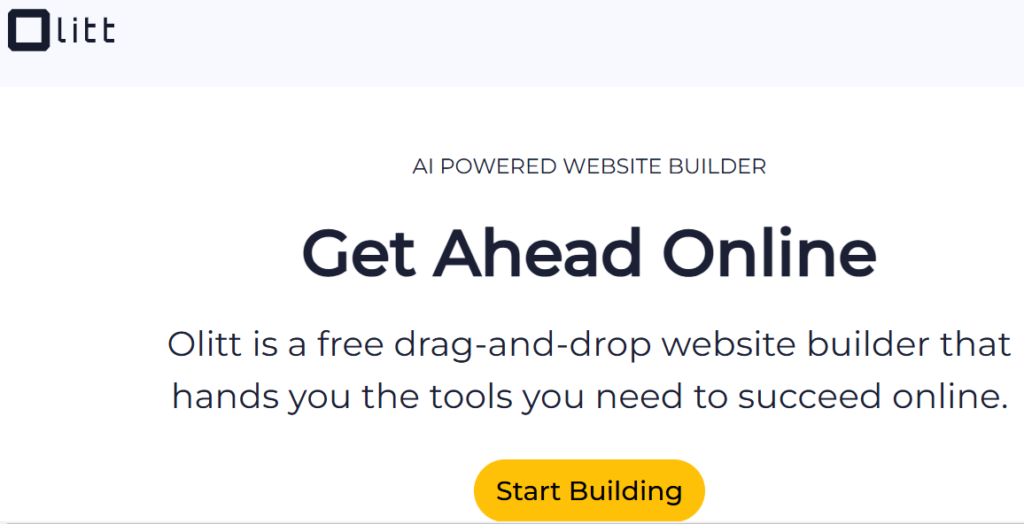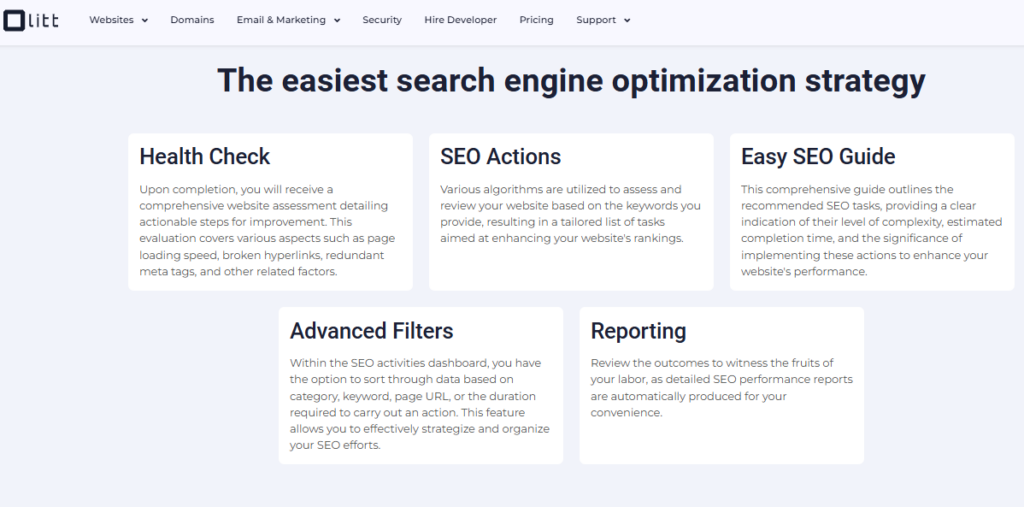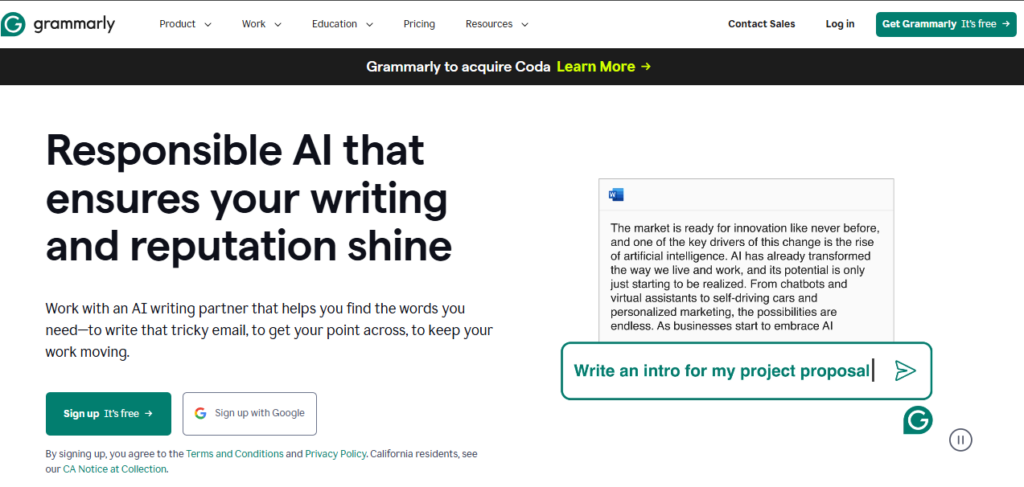Having an easy to use author website builder at your disposal can make a huge difference for writers especially if you don’t want to get lost in all the technical stuff.
Sometimes it feels like too much to build a website for your writes. I mean, you are busy as an author, why bother with having to create a website?
Well, am here to tell you that an author website isn’t just cool to have, it’s a must.
It’s your opportunity to reach out to readers, to unveil your work, and even to sell books.
The best part?

With the right tools, you don’t need to be tech-savvy or spend hours working on your site.
Getting a professional-looking site up and going doesn’t have to take long.
This guide will show you how it’s done, step by step, in a straightforward way and as easy as possible, reducing stress as much as possible.
No matter if you are an established author or just getting started, this guide will lead you through creating the ideal website without the headaches.
Why Every Author Needs a Website
In today’s world, having an online presence is pretty much a must for authors.
Think of your website as your personal space on the internet—one where readers can connect with you, check out your books, and even buy them.
It’s also a great way to share updates, sneak peeks, and insights that you might not be able to share on social media.
Also, a website allows you to have a more intimate connection with your readership by offering them a venue for further information about you and your writing experience.
Using an easy to use author website builder, site construction is effortless.
No need to worry about complicated coding and design skills.
Features to Look for in an Easy Author Website Builder
When it comes to choosing an easy author website builder, it’s important to think about the features it has to offer.
Let’s take a look at the key features you should look for:

1. Pre-designed Templates Made for Authors
An ideal website builder needs to provide templates tailored to authors.
These templates have a typical layout including design features for cover pages, author biography, and addresses.
That is an easy option to present your work in a professional manner, without having to build from scratch or design complex layouts.
2. Easy Drag-and-Drop Tools
The top website builders allow the easiest way to design your website with drag-and-drop functionality.
That is to say, you can also translate objects around on your page by just one click and drag, and there is no need to code.
If you’re not a tech expert, this is a game-changer.
It lets you build your site the way you want, without any stress.
3. Built-in Blog and Book Showcase Options
Your website should facilitate the easy disseminating of information from the author to the reader.
That’s where an integrated blog comes in.
You can use it to post news, updates, or personal insights.
Also, by establishing a platform on your website that allows you to list your books, it is easy for people who might be interested in reading your work to also buy your books.
4. Mobile-Friendly and SEO Optimized
These days, most people surf the internet on their cell phones.
That means, the appearance of your website on any device should matter.
An ideal website builder will automatically resize the layout of the site to fit any screen.
Furthermore, the SEO (Search Engine Optimization) features will help your site get listed in search results and people will more and more easily find your website on the internet.
Step-by-Step Guide to Building Your Author Website
Making an author website, though, may sound daunting, but believe me, with the right tools and a few pointers, it can be so much easier than you imagine.
In this guide, I’ll walk you through each step of building your website using an easy author website builder—so you don’t have to be a tech expert to get a professional-looking site.
Step 1: Choose an Easy Author Website Builder
The first step is choosing a website builder that works for you.
There are some great options out there, including:
Truehost: Truehost is affordable and convenient to use, containing pre-made templates appropriate for authors.
It also includes trustworthy hosting and domain registration capabilities, so it is a “one-stop shop” in which to lay out your website.
Olitt: Ideal for authors looking for quick, no-fuss website creation.
Olitt provides free website-building apps with professional website templates, which can bring your site online in the matter of minutes.

Wix: Traditionally, a user-friendly interface and a large number of customizable templates make it famous.
Squarespace: Offers beautiful, author-friendly designs and built-in marketing tools.
WordPress: Super flexible and loaded with themes specifically for authors.
These platforms allow you to build a beautiful website without technical skills or knowledge.
Just pick the one that seems right for you to get going!
Step 2: Select Your Domain Name
Your domain name is your online identity—it’s how readers will find you.
Make it memorable and professional.
Ideally, you would like to use your own screen name, e.g., yourname.com.

If that’s already in use, just go ahead and use an alternative, such as yournameauthor.com or yournamebooks.com.
No kidding, it’s a good idea not to use book titles or series titles for your domain for future opportunities, as it will heavily constrain you if you fill out several books or begin other endeavours.
Step 3: Pick a Template
One of the easiest ways to get started is by choosing a pre-made template.
Many website builders, including Truehost and Olitt, have templates designed specifically for authors.
These templates are already configured to promote your books and share your story in a way that makes sense to audiences.
Say you choose one, all that’s left to do is make it your own.
Step 4: Customize Your Pages
Now comes the fun part—customizing your pages!
After you set up your template, this is the walkthrough:
Homepage: This is your welcome page. Warm it up with a brief introduction followed by some of my favourites. And you can even directly include a call-to-action such as a request to subscribe for your newsletter.
About Page: This is where you tell your story! Share how you became an author, what inspires your writing, and anything else that helps readers feel connected to you.
Book Showcase: Here’s where you show off your books. List all your published works with exciting descriptions and links where people can buy them (like Amazon or Barnes Noble).
Contact Page: Make it easy for readers to reach out. Provide a contact form and social media links so that fans can communicate with you directly.
Step 5: Optimize for SEO
Once you’re convinced your website looks great, it’s time to make sure people can actually find it.
This is where SEO (Search Engine Optimization) comes in.
Here’s what you need to do:

Tags such as page titles and page descriptions are added to each page.
Adopt appropriate keywords to your site pages so search engines understand what your site is all about.
Make sure your images load quickly by compressing them without losing quality—this helps with both speed and SEO.
With these simple steps, your site will be easier to find and more enjoyable for visitors.
Step 6: Publish and Share
After all is configured, it is time to hit “Publish” and go live with your site.
But don’t stop there—share your website with the world.
Share it on your social media, forward it by email to your mailing list, and tell everybody how they can connect with you online.
You can also keep things fresh by posting updates about your writing projects or sharing blog posts to keep visitors coming back.
Tools and Resources to Simplify the Process
Let’s consider some of the basic tools which are naturally associated with an easy author website builder:
Canva: If you’re not a graphic designer, don’t worry!
Canva is an excellent software for designing awesome banners and graphics for your web site.
It’s loaded with “off-the-rack” templates built for authors, so it’s simple to make social media pages, book covers, marketing and the like–no design skills required!
Grammarly: You want your blog posts and content to shine, right?
Grammarly is your go-to writing buddy.
It also checks for grammatical errors, punctuation errors, and even suggests stylistic options.

Whether you’re writing a blog post or a new book blurb, Grammarly helps you make sure everything sounds just right before you hit publish.
Mailchimp: Getting your readers is all about keeping in touch, and Mailchimp is super easy for email.
You can easily manage your email list, send out newsletters, and even set up automatic emails for new book launches or updates.
It’s a great asset that allows you to interact with and inform your audience.
When you combine these tools with an easy author website builder, you can make your website look great, sound professional, and run smoothly without all the stress.
Mistakes to Avoid When Building Your Author Website
Having an author website can be a thrill, but beware of these mistakes so that your website rocks:
1. Cluttered Design
Too much going on?
Just highlight your books and your book bio.
The majority of website builders provide straightforward, polished layouts to facilitate this.
2. Poor Navigation
Confusing menus drive readers away.
Use a clear structure with easy access to key pages like your homepage, about page, and contact info.
Website builders simplify this for you.
3. Ignoring SEO
Want readers to find you?
Use keywords, metadata, and optimize image loading speeds.
Most website building software includes pre-built SEO applications for better visibility.
4. Not Mobile-Friendly
A site that does not render on phones or tablets loses customers quickly.
Select a builder that automatically makes your site mobile-friendly.
5. Outdated Content
Stale websites turn off readers.
Keep your site current with books, news, blogs, and behind-the-scenes material.
Website builders make it easy to keep things fresh.
Maintaining Your Author Website with Minimal Effort
Update Content Regularly: Keep book listings, reviews, and blog posts fresh.
Track Traffic with Analytics: Use tools like Google Analytics to see what works.
Schedule Posts: Use your website builder’s scheduling feature for automatic updates.
Automate Social Sharing: Tools like Buffer or Hootsuite save time on promotions.
Regular Check-ins: Review for outdated content and broken links periodically.
Conclusion
Building an author website doesn’t have to be a daunting task, even if you’re not tech-savvy.
With the right tools, like an easy author website builder, you can create a professional-looking site that showcases your work and connects with readers without a huge time investment.
By focusing on essential features, planning your content ahead of time, and using automation, you can keep your site fresh and engaging with minimal effort.
Remember, the goal is to make your online presence work for you — so you can spend more time doing what you love: writing!

